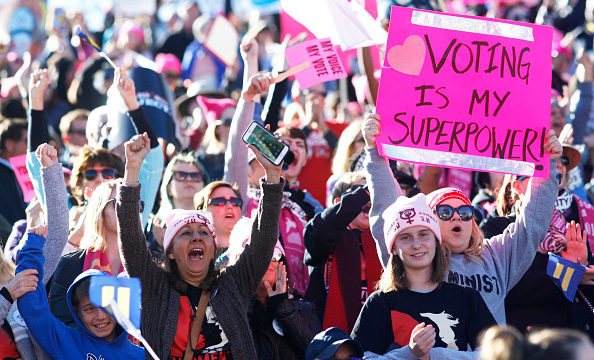This blog post was written by Sofia Baluyut of the Bella Abzug Leadership Institute our 2018 PowHer The Vote campaign.
Intersectionality. The word has been used increasingly since its being coined by Kimberlé Crenshaw in her 1989 paper “Demarginalizing the Intersection of Race and Class.” The word itself encompasses an intuitive and yet in some way revolutionary idea: nobody has only one identity. No one person is solely defined by race, socioeconomic status, gender, etc; instead, one carries all of those different identities and experiences at once. People with many marginalized identities can then face oppression because of the intersection of these identities.
As we come closer to the November 6 election, it becomes more and more important to consider the meaning of intersectionality, especially when fighting for women’s issues. For there is not one singular women’s issue, just as there is not one singular kind of woman. One in five trans people, for instance, will experience homelessness, and trans women of color are particularly vulnerable to violence. Black women are three to four times as likely to die from pregnancy-related issues as white women, and must endure deeply ingrained societal racism that can influence every experience. Many immigrant and undocumented women and girls have to struggle with threats of deportation or threats to their citizenship, and lack of resources. Even youth can be a part of that intersectionality—fear of mass shootings at school feed into an already-existing problem of increasing anxiety and depression in younger generations.
These are just a few examples of the issues that women can face because of particular parts of their identity, and they show how dire it is to include their varied experiences.
So when we talk about electing leaders who protect the most vulnerable in our country, understand that yes, we do mean women in general. But we also mean women with specific experiences—we have to mean immigrant women, women of color, LGBTQIA+ women, and more.
So how do we make sure these issues are addressed and voices are heard? First, make sure you are registered to vote! And then look for the candidates who are themselves members of these underserved and underrepresented community; consider giving them your vote and a chance to have a voice in government. And regardless of their background, listen to every candidate to see how they address women’s issues. Come with an understanding that there are issues that women can share—but also that when we talk women’s issues, we also have to include a whole lot more.


